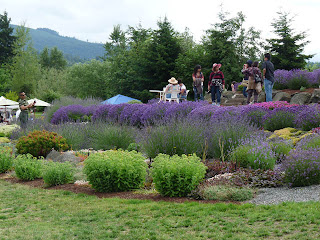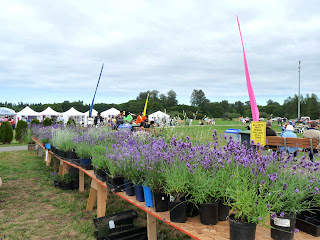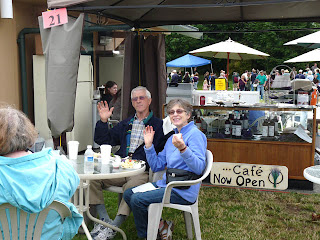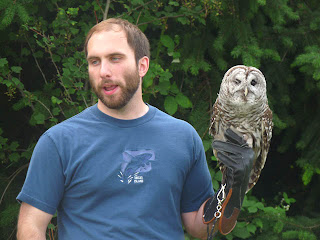I just love this place, although I wondered if this affair of the heart would have staying power. The island bewitched me the first time I went and then played hard to get the second time when we stayed in the wrong resort during a two week freak monsoon and fog bank. After all it is hard to ‘have fun’ whilst suffering hypothermia and gazing at redundant swimming pool and sun loungers through condensationed windows.
The place can be as fickle as its signposts and even the locals seem uncertain as to whether it is spelt Cephalonia or Kefalonia. Our particular holiday started like so many others with a two hour drive from Wiltshire to Gatwick Airport. Again, like most holidays the flight departure time was so early that even our wake-up call sounded tired. It was made a little bearable in that we had booked the night before at the Hilton South Terminal Gatwick thus avoiding any risk of oversleeping (we thought).
The Hilton is like any other Airport hotel i.e. legions of travelling folk either in transit or plonked there by their airline for various reasons. On top of them you have over-nighters like us
The hotel reflects its clientele by trying to be the right thing for everyone and, in this case, failing for most. The airlines want to pay next to nothing so they try to serve cheap food at the highest price possible to other customers. The Carvery in the main restaurant displayed this by offering minimal starter (mainly salad) with cheap cuts of meat. I found at least one large rubbery artery hanging out of my cut of lamb .I picked it up by said blood vessel and dangled it before a shocked restaurant manager. It had to go back and, to be fair; they did not dare charge me.
The 'two hotel' bit comes with the rooms. You get the new bit and the old bit. New is mainly exec rooms and old is, well, old and quite horrid. They tend to put all the cheapy airline customers in the old part and the higher payers in the new unless (like most nights) they are full and you then take your chances. Also, if you are a smoker, you are doomed to the worst of the worst. Serves you right you may say but smoker’s money should be as good as anyone else. One day I will have to persuade my wife to stop otherwise we will continue to be shunned or carted off to the darkest recesses of hotel buildings!
The room we had was vile and overlooked the staff car park and an old prefabricated shed. We sought refuge in their ‘Executive Lounge’ but this was full of kids rolling on the floor. At one stage a ‘Buzz Lightyear’ model hurtled past my ear as one little boy was seeing if it could really fly. We could not handle this level of sophistication so off we went to the main bar. There things got a lot better. We started talking to three folk in wheelchairs. They were part of an organisation called BEWSA who are the British Ex-servicemen Wheelchair Sports Association. They were off to compete in an event in the USA and were wholly responsible for me getting drunk and nearly missing our flight. Fortunately I had checked our cases in with Thomson the night before and I would recommend this to anyone who is able to do it. That way it avoids the horrendous queue at check in and enables silly boys or girls like me to have one or two extra pints. It also means they do not weigh your hand baggage at check in.
Have you ever had one of those horrifying moments when you simultaneously wonder a) who you are b) where you are and c) why you feel like a beached whale with heartburn? That was me when the sleepy wake-up call invaded my consciousness and told me enough to realise I had set the time of it wrong. The rest was a blur with both of us running around our ‘palatial’ room like headless chickens. I flung the curtains opened only to terrorise a young lady staff member who was climbing out of her car just below me. Where are my pants I thought?
Have you ever tried to move quickly through an airport? Impossible. You see, normal folk turn into entranced zombies when they are on airport concourses. What is worse is that these stumbling zombies wield suitcases, water bottles, rucksacks and kids around them as the lurch and come to sudden stops for no reason whatsoever. We battered our way through the lot of them remembering the dire warnings given at check-in the night before about how they load and depart their planes sometimes ahead of schedule.
We finally got to the gate. What did we do there? We sat. And then we sat some more. Then we watched the rest of the plane’s passengers slowly amble to the departure area. 45 minutes later they boarded the flight. You see I should have known better. Airlines will always tell you to get to the gate long before you need to. They do it because they know you are going to be late and they don’t want to hang around. Trouble is it becomes rather like those motorway warning signs; one either take no notice or assume they are warning you too far in advance
Our Thomson flight to Argostoli in Cephalonia was pretty uneventful. It took little over three hours which was just about as long as I would be willing to put up with such little leg room. I had made a wrong assumption when booking our specific seats which was that as I had paid to book them I would receive them. This was wrong. If you pay to book specific seats then all you are getting guaranteed is seats next to each other. If you want the exit row then you have to pay more for these extra room seats! If you do as I did which was book the seats that I knew (in that particular aircraft type) were the emergency exit then they reserve the right to move you out of them nearer the flight time – unless you pay more.
Coming back I ended up paying twice to get the seats I had originally booked! We enjoyed our full size bottle of champagne and a fine selection of chocolates that I had pre-ordered on Thomson. The champagne brand would not make Moet et Chandon quake in their shoes but very adequate despite my hangover. We also bought snacks on the plane although the prices were through the roof. We initially laughed when an elderly couple next to us got out their picnic of potted meat sandwiches, pork pie and a thermos of tea but the last laugh was on me...and my wallet when I paid silly money for a bacon baguette.
So we arrived, on time, at Argostoli and not too much the worse for wear. It was hot and sunny and we entered the building in high spirits. It is not the largest of airports but the air conditioning worked well and there were a few places to sit whilst waiting for one’s bags. It was then that I started wondering about the night before bag check in service and whether they had remembered to load our cases the next day.
We waited and waited. Finally the first of our bags spewed onto the carousel. I immediately spotted it was mine not Judith’s which was not good news. Greek baggage handlers must be the slowest in the World and I warn you that you will need to be patient. Time ticked by and no bags were forthcoming. Finally, right at the very end, the last bag popped out and thankfully it was ours. Praise be! Nothing worse than being cloth less in a foreign country, especially as it would have been “all my fault”.
The rest of the formalities on arrival at this airport are minimal and we were soon out the other end without ever knowing if we had been through customs. We decided to pick up a car at the airport and we used a company called CBR which has their office less than 5 minutes stroll from the terminal entrance. I simply wheeled our bags up there and the car was waiting. You can get all types of hire car but I recommend you pick one with a slightly bigger engine due to the steep and winding terrain you may end up driving through.
The island is split up into two tourist parts. The southern coastal strip, which is more open, sandy and populated, and the north which is mountainous, very much quieter and more scenic. The main southern resorts are Scala, Lourdas and Lassi while in the north you have villages and ports like Fiscardo, Assos and Agia Efimia. In the not too distant past there was a significant earthquake on the island which affected the landscape in the south whilst leaving the north almost untouched.
The island is a very relaxing place and the overwhelming number of local people are kind and helpful. If you do pick up a car at the airport you must make sure you have good directions to your destination as the road signs are pretty useless. The airport itself is well signposted but if you are going to say Fiscardo like we were than forget it without a concise guide. You have to skirt around the main town of Argostoni and that is much easier said than done.
Also be aware that if you are on a roundabout you have to give way to any car joining it! The drive from the airport to the villa we were staying at not far from Fiscardo takes about an hour. Once beyond the main town you literally follow the coast northwards on a good quality very winding road built into the cliff face. Overtaking is neither recommended or that possible and coming face to face with a lorry full of locals speeding the other way is always good fun for thrill seekers!
If you have a manual geared car you will have well exercised wrists by the time you get where you are going. Finally watch out for goats as they think they own the road and can stroll in front of you at any time. I was moaning further back about the early flight but its advantage is that flying at 6.30 a.m. means you get out of your car at the villa around 2 p.m. local time which is perfect for gaining access after the maids have cleared up from previous guests. Also, when going home, you can leave the villa around 10 a.m. and have loads of time to get to the airport. Still a blooming awful peak time to fly out from Gatwick, especially if you are checking in bags on the day.
So we arrived at our villa and it was beautiful in every way. Breath-taking views over forests and cliffs, clean sparkling pool with plenty of sun loungers, everything you could want…if you could get in that is. The key was in the door but the door would not open. We were literally stuck outside peering through the windows at what seemed a perfectly renovated cottage. It was called ‘Vigli Retreat’ and unsurprisingly located in the village of Vigli which is perched above the Ionian Sea.
The villas are high enough to catch any breeze but close enough for the short trip to various beaches nearby. We rented it via a company called Unique Villas and were very pleased with our choice of company and location. It would have been even better if we could have got through the front door but eventually I was able to open the rear entrance.
Apart from being well equipped and in a very pretty scenic spot the villa and its location had other virtues. There is a good grocery shop in nearby Maganos and less than ten minutes from there is the beautiful fishing village of Fiscardo which has at least three bigger food stores. On the way to Fiscardo there are at least two excellent restaurants and our favourite was The Stone House who do great spit roasts twice a week on Fridays and Sundays. I will tell you more about Fiscardo later.
Probably like most people the first thing we did was thoroughly inspect the villa and what it contained. Unique Villas provide a small supply of essentials but frankly not enough to see you through a continental breakfast. A complementary bottle of wine was a nice touch but no substitute for bread and butter. I was disappointed that there were a shortage/lack of essentials like kitchen roll, toilet paper, oil and the sort of things that others, like us, leave behind them but Unique Holidays say they are restricted in what they leave by food and hygiene rules. I am not convinced!
The rest of the villa appeared in excellent working order. The air conditioning was extremely effective in both the open plan lounge/kitchen and bedrooms. There was plenty of hot water to go round and the windows opened up to a very pretty well tended exterior.
Like many Mediterranean bedrooms the beds consisted of normal mattresses laid directly on top of boards and took a bit of getting used to. Never mind we thought, we could recover during the day on those brand new sun loungers we saw on the way in. The next day proved a little more taxing. After a night on the hard beds we headed for the sun loungers only to find that they were made of hard plastic and had no mattresses. In fact the only covers of any sort were four small wafer thin seat covers for alfresco dining. It seems strange that someone who has clearly spent so much money on furnishing a villa should skimp on such comfort essentials. We can soon sort this out, I thought.
I decided to wait until the following day (Monday) to call the area rep as I did not want to disturb his weekend. It was then that we discovered Panos. Or ‘Panos the Terrible’ as I nicknamed him afterwards!
The villa has no phone, no Wi-Fi and practically no mobile phone signal so I took the opportunity of ringing on my mobile whilst shopping in Fiscardo where the signal is strong. Also you can pick up free Wi-Fi there. I got through to a very grumpy Panos on the third attempt. It sounded as though he was riding his motorbike at the time judging by the noise and the regular cutting off which he clearly seemed to blame me for.
I tried to tell him about the door and mattresses until he grunted and seemed to hang up. Welcome to Cephalonia I thought. When I got back to the villa I noticed a motorbike that looked half abandoned in the driveway and there was Panos stomping around the corner in all his glory and he did not look happy. He did not seem to grasp the fact that I was not there waiting for him and his mood seemed to deteriorate as I tried to explain about the door and sun beds and the lack of phone signal.. The door issue was quickly solved. You see what I had missed was that because such doors have airtight seals you have to yank them towards you before pushing them forward. This he demonstrated with such gusto that strips of the sealant fell off it. Silly me!
The mattress problem was a bit harder (excuse the pun). We were told in a voice usually reserved for children’s television announcers that the covers for the chairs were also for the sun beds. He then placed the tiny thin cover on one of the beds just to be sure our tiny brains had absorbed this obvious solution. It was like covering an elephant with a teacloth but by this time I just wanted him out of there.
Finally, and with a theatrical shrug of his shoulders he disappeared under the swimming pool and emerged with one of the old sun beds. This was canvas and a little better, but not much.
Anyway, he then headed for the gate and I asked if he had a second one. “You want another” he asked incredulously? “No” I said wearily, that will do. The rest of the holiday we part solved the problem by taking all the blankets out of the villa and putting them under our towels. Goodbye Panos! Would we go back to this villa? Yes, like a shot.
It was beautiful, well equipped, remote but easily accessible. We would insist on the addition of sun bed mattresses and definitely a ban on Panos calling but otherwise it is a brilliant. Late June is a good time to go as well. We had two weeks of warm sunshine and moonlight nights and the pool had time to get nice and warm. We only had one more panic which was when ‘Bongo Bob’ (another nickname) arrived at the villa next door. This villa is usually unobtrusive and silent as it is not rented to foreigners but, for a few days ‘Bob’ arrived with what was possibly the only drum kit in northern Cephalonia.
There we were, drink wine in the pool, basking in those ‘post Panos’ days when the drum roll started followed by cymbals and a backing track. What the hell was that we thought? Fortunately the others in his appreciated his drums as much as we did so we heard them only a few times after if they went out and left him behind. Anyway, back to the Island itself. It really is a special place with fantastic views and very nice people.
Some have worried about going because of possible economic unrest but the Greek Islands might as well be a million miles from Athens where there might be any trouble. They are totally dependent on tourism and do not want to spoil the businesses they have created.
There is a bit more poverty and food does cost a bit more than previous years but not much. You can still change money easily and there is more in the shops (apart from Sun bed mattresses) than in the past. As I said earlier the island really split into two markets.
The south is for bigger beach resorts with plenty going on and the north is all mountains, coves and fishing villages. If you like nightspots the north is probably not for you but if you want coves, sleepy villages, good food and pretty tavernas it is spot on. Some of the places like Myrtos Beach and Assos village are almost breath-taking in their beauty. Fiscardo is a wonderful place which still has its own small fishing fleet which you can lazily watch as you enjoy a drink and meal on the quayside.
It is a wonderful place for people watching too which seems to be the local pastime. I recommend that if you want to watch the world go by then sit at Theodora’s Café/Bar either by the water or on her balcony. You will get great people and a perfect view of all the yachts, boats and people as they pass by. The food here is good but there are loads of other places all around.
You owe it to yourself to go to Cephalonia at least once in your life. It is a wonderful place with kind and warm hearted people. We will certainly be going again.



























